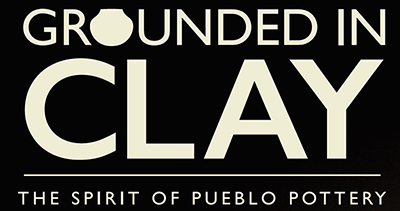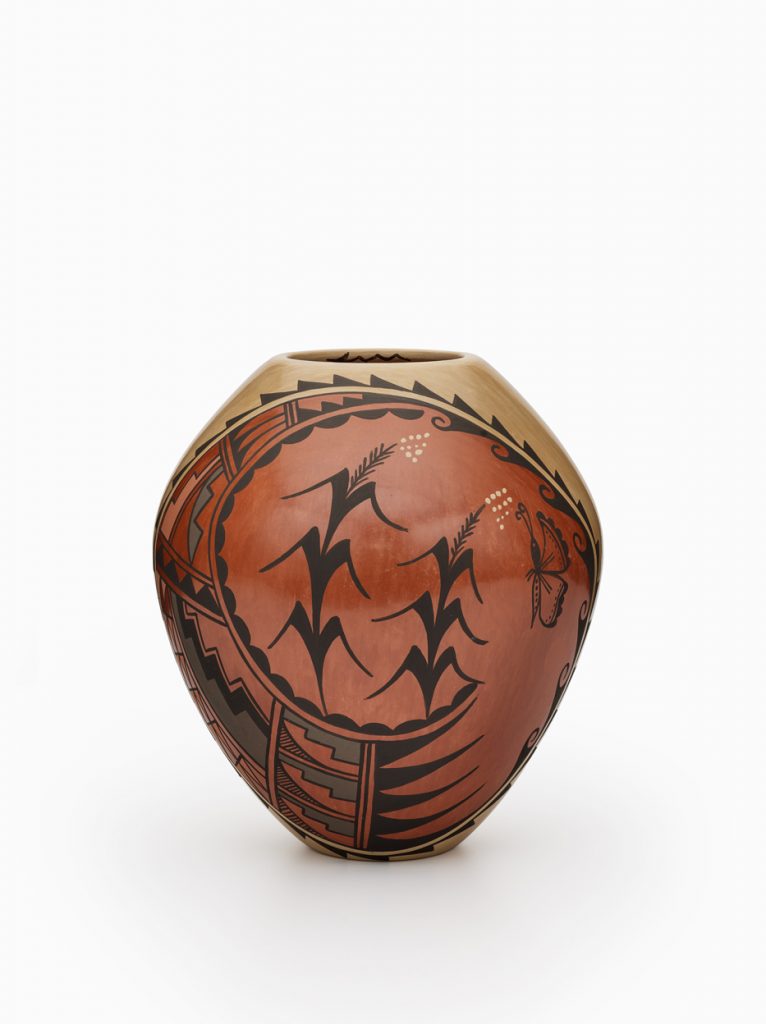Dr. Christina Castro
Taos Pueblo, Jemez Pueblo, Chicana
Curator Dr. Christina M. Castro (Taos Pueblo, Jemez Pueblo, Chicana) was born in Southern California to a family who participated in the federal Indian Relocation program. She currently resides in O’gah’poh geh Owingeh (Santa Fe), New Mexico. She is a mother, writer, farmer, scholar, educator, community organizer, multidimensional artist, public speaker, and more. In 2017 Dr. Castro cofounded Three Sisters Collective (3SC), an Indigenous women centered grassroots organization devoted to art, activism, education, and community-building. She is also an independent consultant with Castro Consulting.
Categories:
Tribal Affiliations:
Artwork Affiliations:
Christina chose the following for the Grounded in Clay exhibit:
A Corn Mother’s Journey
Juanita Fragua, from Jemez Pueblo, is a member of my extended family, and is one of several Pueblo potters credited with the Jemez pottery revival or renaissance. Her artistry is an exquisite testament to the evolution of Pueblo pottery as an art form. This piece exudes grace and refinement, much like the Jemez Pueblo women, who take great pride in their femininity, whether demonstrated in their ceremonial attire or simply in their cooking the delicious stews and “Jemez enchiladas” for which they are known. The sheer amount of work involved in producing the pot is something to be commended. Its sensual curves are feminine and inviting. The corn motifs, ripe with pollen, allude to fecundity and regeneration, while the butterfly is an international symbol of radical transformation.
This piece is absolutely sexy! It calls to mind the power of the matriarch, the ever-evolving stages of our lives as mothers and caretakers. It also reminds me of the sassy Jemez women and their easy comfort with their sexuality—something not often spoken about in direct terms, but felt nonetheless.
As for Aunt Juanita, I know that she moved with her husband, Manuel Fragua, to San Francisco in the 1950s, during the federal Indian relocation era, when Native people were recruited to work in urban blue-collar industries. Many Jemez people participated in “relocation,” which was in actuality an assimilation policy under the guise of economic opportunity. Juanita had several children there before eventually returning with her family to Jemez, where she lives to this day, directly across the road from my family’s home. In my view, her work also reflects some of the city aesthetics she absorbed while living in California—clean lines and lots of shine!
My grandparents were also relocation participants in California. I grew up mostly in California, but moved to New Mexico for college. I was in my early twenties when I started actively connecting with my Pueblo roots. Eventually I moved to Jemez and, when the time came to participate in traditional corn dances, Aunt Juanita was always there, offering her gentle guidance. Sometimes she helped me get ready for the dances, and at other times she lent me jewelry or dresses. Her generation’s knowledge of Jemez culture is something I can only imagine. These are the true matriarchs! I am grateful to her for taking the time to guide me as I entered the traditional realm. That was quite some time ago, and I am now guiding my own daughter and goddaughter through traditional participation.

